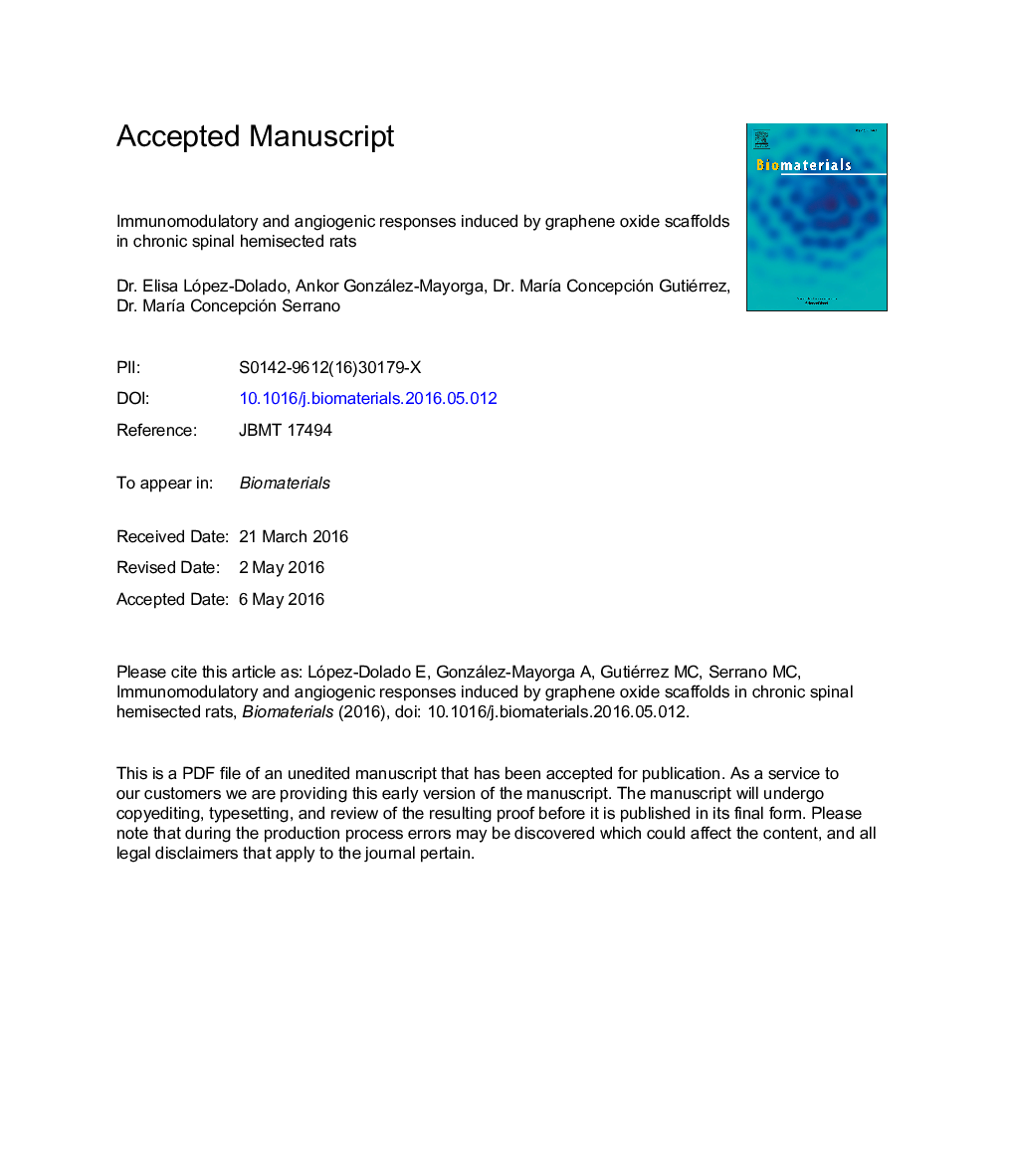| Article ID | Journal | Published Year | Pages | File Type |
|---|---|---|---|---|
| 6484935 | Biomaterials | 2016 | 32 Pages |
Abstract
Attractive physic-chemical features of graphene oxide (GO) and promising results in vitro with neural cells encourage its exploration for biomedical applications including neural regeneration. Fueled by previous findings at the subacute state, we herein investigate for the first time chronic tissue responses (at 30 days) to 3D scaffolds composed of partially reduced GO (rGO) when implanted in the injured rat spinal cord. These studies aim to define fibrotic, inflammatory and angiogenic changes at the lesion site induced by the chronic implantation of these porous structures. Injured animals receiving no scaffolds show badly structured lesion zones and more cavities than those carrying rGO materials, thus pointing out a significant role of the scaffolds in injury stabilization and sealing. Notably, GFAP+ cells and pro-regenerative macrophages are evident at their interface. Moreover, rGO scaffolds support angiogenesis around and, more importantly, inside their structure, with abundant and functional new blood vessels in whose proximities inside the scaffolds some regenerated neuronal axons are found. On the contrary, lesion areas without rGO scaffolds show a diminished quantity of blood vessels and no axons at all. These findings provide a foundation for the usefulness of graphene-based materials in the design of novel biomaterials for spinal cord repair and encourage further investigation for the understanding of neural tissue responses to this kind of materials in vivo.
Related Topics
Physical Sciences and Engineering
Chemical Engineering
Bioengineering
Authors
Elisa López-Dolado, Ankor González-Mayorga, MarÃa Concepción Gutiérrez, MarÃa Concepción Serrano,
